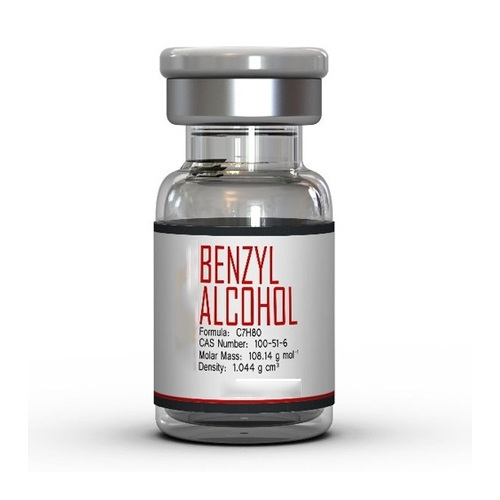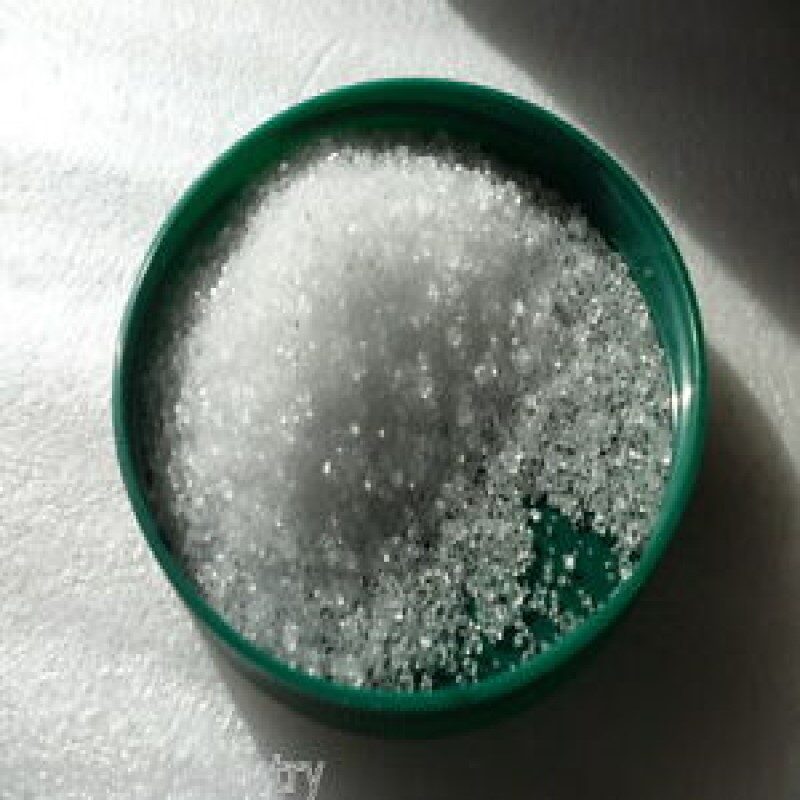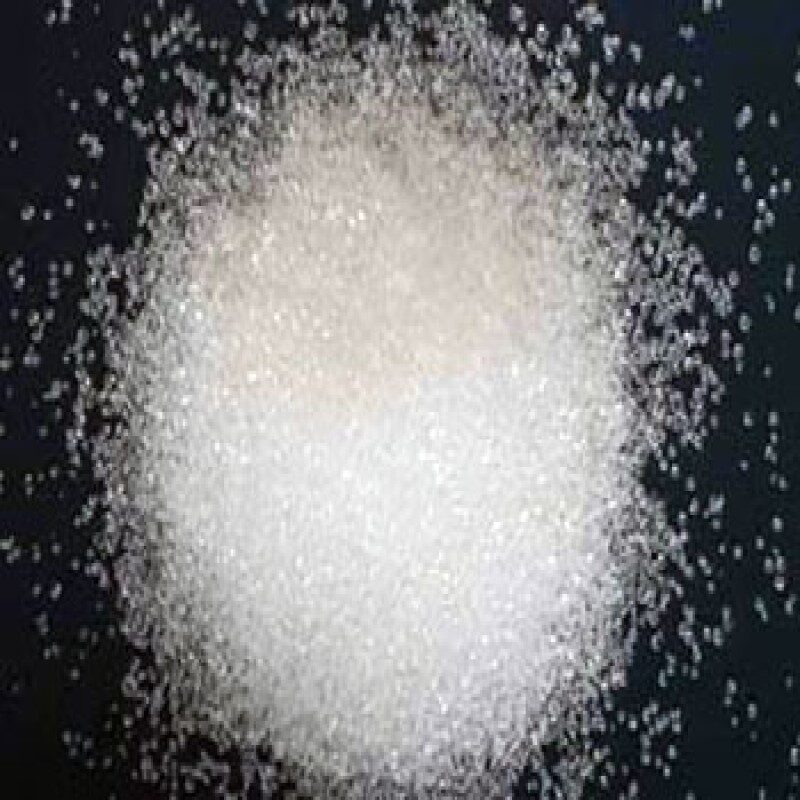Description
Remarks: The sample complies as per above Specification.
Uses: Benzyl alcohol is used as a general solvent for inks, waxes, shellacs, paints, lacquers, and epoxy resin coatings. Thus it can be used in paint strippers, especially when combined with compatible viscosity enhancers to encourage the mixture to cling to painted surfaces.
Packing: 25 kg HDPE Jerry Can
For AMIZARA SPECILITY CHEMICALS LLP
Benzyl Alcohol FAQs
1. What are the main applications of Benzyl Alcohol provided by Amizara Speciality Chemicals?
Amizara Speciality Chemicals’ Benzyl Alcohol is commonly used as a solvent, fragrance ingredient, and preservative in various industries including pharmaceuticals, personal care, and flavor & fragrance.
2. How does Amizara Speciality Chemicals ensure the purity and quality of its Benzyl Alcohol product?
Our Benzyl Alcohol undergoes stringent quality control measures to ensure high purity levels and compliance with industry standards, guaranteeing its effectiveness and safety in different applications.
3. Is Benzyl Alcohol from Amizara Speciality Chemicals available in different grades or concentrations?
Yes, we offer Benzyl Alcohol in various grades and concentrations to meet the specific requirements and preferences of different industries and applications, providing flexibility and customization options for our customers.
4. What precautions should be observed when handling Benzyl Alcohol supplied by Amizara Speciality Chemicals?
It is important to handle Benzyl Alcohol with care, following recommended safety procedures and guidelines to minimize exposure and potential hazards associated with its handling and use.
MSDS
Benzyl Alcohol SDS, Safety Data Sheet MSDS Sheet; Material Safety Data Sheet
SECTION 1: Product Identification
| Product Name & Other Names: |
Benzyl Alcohol; Benzenecarbinol; benzenemethanol; alpha-hydroxytoluene; Phenyl Methyl alcohol; Phenyl carbinol. |
| CAS No.: |
100-51-6 |
| EINECS EC Number: |
202-859-9 |
| Molecular Weight: |
108.14 |
| Chemical Formula: |
C6H5CH2OH. |
| Relevant uses and uses advised against (if any): |
Industrial use only. |
| Supplier: |
As per letterhead. |
SECTION 2 : Hazards Identification
GHS, Globally Harmonized System Classification in accordance with 29 CFR 1910 Classification according to Regulation (EC) No 1272/2008
Acute toxicity, Oral Category 4, H302
Acute toxicity, dermal Category 4, H312
Skin corrosion/irritation Category 2, H315
Acute toxicity, inhalation Category 4, H332
Hazardous to the aquatic environment, acute hazard Category 2, H401
Labeling according GHS USA & Regulation (EC) No 1272/2008
Hazard statements:
Hazard statements:
| H302: |
Harmful if swallowed. |
| H312: |
Harmful in contact with skin. |
| H315: |
Causes skin irritation. |
| H332: |
Harmful if inhaled. |
| H401: |
Toxic to aquatic life. |
Precautionary statements:
Classification according to EU Directives 67/548/EEC or 1999/45/EC:
Hazard Symbols:Risk Phrases:Risk Phrases:
| P261: |
Avoid breathing dust/fume/gas/mist/vapors/spray. |
| P262: |
Do not get in eyes, on skin, or on clothing. |
| P264: |
Wash skin thoroughly after handling. |
| P270 : |
Do not eat, drink or smoke when using this product. |
| P271 : |
Use only outdoors or in a well-ventilated area |
| P273: |
Avoid release to the environment. |
| P280: |
Wear protective gloves/protective clothing/eye protection/face protection. |
| P314: |
Get Medical advice/attention if you feel unwell.. |
| P330: |
Rinse mouth |
| P301+P312 : IF SWALLOWED: |
Call a POISON CENTER or doctor/physician if you feel unwell . |
| P302+352: IF ON SKIN: |
Wash with soap and water. |
| P332+313 : If skin irritation occurs: |
Get medical advice/attention. |
| P304+340: IF INHALED: |
Remove victim to fresh air and keep at rest in a position comfortable for breathing. |
| P305+ P351 + P338 IF IN EYES: |
Rinse cautiously with water for several minutes.
Remove contact lenses, if present and easy to do. Continue rinsing. |
| P337+P313 If eye irritation persists : |
Get medical advice/ attention. |
| P330: |
Rinse mouth. |
| P360: |
Rinse immediately contaminated clothing and skin with plenty of water before removing clothes. |
| P362: |
Take off contaminated clothing and wash before reuse. |
| P501: |
Dispose of contents/ container to an approved waste disposal plant. |
| Xn Harmful |
| R20/21/22: |
Harmful by inhalation, in contact with skin and if swallowed. |
| R51 : |
Toxic to aquatic organisms. |
SECTION 3 : Composition/Information on Ingredients
| Ingredient : |
Benzyl Alcohol |
| CAS No.: |
100-51-6 |
| EINECS: EC Number: |
202-859-9 |
SECTION 4: First Aid Measures
Always seek medical attention after first aid measures are provided
| Inhalation: |
If inhaled, remove to fresh air. If not breathing, give artificial respiration. If breathing is difficult, give oxygen. Get medical attention. |
| Ingestion: |
Give large amounts of water to drink. Never give anything by mouth to an unconscious person. Get medical attention.. |
| Skin Contact: |
Immediately flush skin with plenty of water for at least 15 minutes. Remove contaminated clothing and shoes. Get medical attention. Wash clothing before reuse. Thoroughly clean shoes before reuse. |
| Eye Contact: |
Check for and remove any contact lenses. Immediately flush eyes with running water for at least 15 minutes, keeping eyelids open. Cold water may be used. Get medical attention. |
SECTION 5 : Fire Fighting Measures
| Fire: |
Flash point: 93C (199F). |
| Auto ignition temperature: |
436C (817F). Combustible. High heat or direct flame is necessary to cause ignition. |
| Explosion: |
Above the flash point, explosive vapor-air mixtures may be formed. |
| Fire Extinguishing Media: |
Dry chemical, foam, or carbon dioxide. Do not use a solid stream of water since the stream will scatter and spread the fire. Water spray may be used to keep fire exposed containers cool. |
| Special Information: |
In the event of a fire, wear full protective clothing and NIOSH-approved self-contained breathing apparatus with full face piece operated in the pressure demand or other positive pressure mode. |
SECTION 6: Accidental Release Measures
Methods and materials used for containment Cleanup procedures and Storage
| Personal precautions, protective equipment, and emergency procedures: |
Avoid breathing dust/fumes/gas/mist/vapors/spray. Use individual protective equipment (waterproof boots, suitable protective clothing, safety glasses, etc). Restrict unprotected personnel from the area. Prevent any contact with hot surfaces. Do not approach facing the wind. Do not touch the spilled material. |
| Environmental precautions: |
Do not let the product enter drains, soil or water sources. |
| Small Spill: |
Dilute with water and mop up, or absorb with an inert dry material and place in an appropriate waste disposal container. Finish cleaning by spreading water on the contaminated surface and dispose of according to local and regional authority requirements. |
| Large Spill: |
Benzyl Alcohol is Combustible material. Keep away from heat. Keep away from sources of ignition. Stop leak if without risk. Soak up with inert absorbent material and dispose of as hazardous waste. Keep in suitable, closed containers for disposal. Finish cleaning by spreading water on the contaminated surface and dispose
as per law. |
SECTION 7: Handling and Storage
| Precautions for safe handling: |
Apply according to good manufacturing and industrial hygiene practices. Ensure proper ventilation. Wash thoroughly after handling. Do not drink, eat, or smoke while handling. Avoid contact with skin, eyes, and clothing. Minimize dust generation. Avoid breathing dust/fumes/gas/mist/vapors/spray. Avoid
contact with eyes, skin, and clothing. Keep container tightly closed. Avoid ingestion and inhalation. Use individual protective equipment (waterproof boots, suitable protective clothing, safety glasses, etc). Prevent any contact with hot surfaces. |
| Conditions for safe storage, including any incompatibilities: |
Store in cool, dry, and ventilated area away from heat sources and protected from sunlight in tightly closed original container. Keep air contact to a minimum. Do not leave the material container open. Store protected from heat, sparks and ignition sources and incompatible materials. Avoid contact with skin and eyes. Avoid inhalation of dust/mist/vapor. Do not store with incompatible materials like acids, oxidizing agents, and aluminum. Outside or detached storage is preferred. Inside storage should be in a standard flammable liquid storage room or cabinet. Separate from oxidizing materials. Storage and use areas should be No Smoking areas. Containers may be hazardous when empty. |
SECTION 8: Exposure Controls/Personal Protection
| Airborne Exposure Limits: |
AIHA Workplace Environmental Exposure Level (WEEL):10 ppm, 8-hour, TWA. |
| Ventilation System: |
A system of local and/or general exhaust is recommended to keep employee exposures as low as possible. Local exhaust ventilation is generally preferred because it can control the emissions of the contaminant at its source, preventing dispersion of it into the general work area. Please refer to the ACGIH document, Industrial Ventilation, A Manual of Recommended Practices, most recent edition, for details. |
| Personal Respirators (NIOSH Approved): |
For conditions of use where exposure to the substance is apparent and engineering controls are not feasible, consult an industrial hygienist. For emergencies, or instances where the exposure levels are not known, use a full-face piece positive-pressure, air-supplied respirator. WARNING: Air purifying respirators do not protect workers in oxygen-deficient atmospheres. |
| Skin Protection: |
Wear impervious protective clothing, including boots, gloves, lab coat, apron or coveralls, as appropriate, to prevent skin contact. |
| Eye Protection: |
Use chemical safety goggles and/or a full face shield where splashing is possible. Maintain eye wash fountain and quick-drench facilities in work area. |
SECTION 9: Physical and Chemical Properties
| Appearance: |
Clear, colorless liquid. |
| Odor: |
Faint aromatic odor. |
| Odor threshold: |
Not available. |
| pH: |
Not available. |
| Relative density: |
1.05. |
| Boiling Point: |
205C (401F). |
| Melting Point: |
15C (5F). |
| Flash point: |
Not available. |
| Auto-ignition temperature: |
Not available. |
| Decomposition temperature: |
Not available. |
| Upper/lower flammability or explosive limits: |
Not available. |
| Vapor Density (Air=1) : |
3.72 |
| Vapor Pressure (mm Hg): |
0.15 @ 25C (77F). |
| Evaporation Rate (BuAc=1): |
1.8 (Ether = 1). |
| Flammability (solid, gas): |
Not available. |
| Partition coefficient: n-octanol/water: |
Not available. |
| Solubility: |
0.29 g / 100 ml. water; sinks in water. |
| Viscosity: |
Not available. |
SECTION 10. Stability and Reactivity
| Stability: |
Benzyl Alcohol is stable under ordinary conditions of use and storage. Undergoes slow oxidation in the presence of air or oxygen to form benzaldehyde and benzoic acid. |
| Hazardous Decomposition Products: |
Carbon dioxide and carbon monoxide may form when heated to decomposition. |
| Hazardous Polymerization: |
When heated past 100C, Benzyl Alcohol containing hydrogen bromide and dissolved iron may polymerize with a rapid increase in temperature. |
| Incompatibilities: |
Acids, oxidizing agents, and aluminum. Will attack some plastics. |
| Conditions to Avoid: |
Heat, flames, ignition sources and incompatibles. |
SECTION 11. Toxicological Information
| Oral rat LD50: |
1230 mg/kg
LD50 Oral – Rat – male – 1.620 mg/kg. |
| Skin rabbit LD50: |
2000 mg/kg; irritation, skin rabbit, standard Draize, 100 mg/24- hour, open, moderate. |
| Mutagenic Effects: |
Mutagenic for bacteria and/or yeast. |
| Teratogenic Effects: |
Not available.. |
| Developmental Toxicity: |
Not available. |
| Carcinogenicity: |
No component of this product present at levels greater than or equal to 0.1% is identified as probable, possible or confirmed human carcinogen by IARC. |
SECTION 12. Ecological Information
| Results of PBT and vPvB assessment: |
This substance/mixture contains no components considered to be either persistent, bioaccumulative and toxic (PBT), or very persistent and very bioaccumulative (vPvB) at levels of 0.1% or higher. |
| Environmental Fate: |
When released into the soil, this material is expected to leach into groundwater. When released into the soil, this material may evaporate to a moderate extent. When released into the soil, this material may biodegrade to a moderate extent. When released into water, this material is not expected to evaporate
significantly. When released into water, this material may biodegrade to a moderate extent. This material has an estimated bio concentration factor (BCF) of less than 100. This material is not expected to significantly bio accumulate. When released into the air, this material is expected to be readily degraded by reaction with photo chemically produced hydroxyl radicals. When released into the air, this material is expected to have a half-life between 1 and 10 days. When released into the air, this material may be removed from the atmosphere to a moderate extent by wet deposition. |
| Toxicity to fish LC50 – Lepomis macrochirus (Bluegill): |
10 mg/l – 96 h. |
| LC50 – Pimephales promelas (fathead minnow): |
460 mg/l – 96 h. |
| Toxicity to daphnia and other aquatic invertebrates: |
EC50 – Daphnia magna (Water flea) – 55 mg/l – 24 h
Daphnia magna (Water flea) – 230 mg/l – 48 h. |
| Environmental Toxicity: |
The LC50/96-hour values for fish are from 10 to over 100 mg/l. This material may be toxic to aquatic life. |
SECTION 13. Disposal Considerations
Whatever cannot be saved for recovery or recycling should be managed in an appropriate and approved waste disposal facility. Processing use or contamination of this product may change the waste management options. State and local disposal regulations may differ from federal disposal regulations. Dispose of container and unused contents in accordance with federal, state, and local requirements.
SECTION 14. Transport Information
| DOT: |
Not regulated |
| IMDG: |
Not regulated. |
| IATA: |
Not regulated |
| Canada TDG hazard class: |
Not regulated |
| Europe ADR/RID hazard class: |
Not regulated |
| ICAO / IATA (air) hazard class: |
Not regulated |
SECTION 15. Regulatory Information
USA:
- SARA 311/312: Acute: Yes; Chronic: Yes; Fire: Yes.
- SARA 302 Extremely Hazardous Substance: None present in regulated quantities.
- SARA 304 Emergency Release Notification: None present or none present in regulated quantities.
- SARA 313 (TRI Reporting): None present or none present in regulated quantities.
- US California Proposition 65: No ingredient regulated by CA Prop 65 present.
SECTION 16. Other Information
European Labeling in Accordance with EC Directives:
- H302 :Harmful if swallowed.
- H312:Harmful in contact with skin.
- H315 :Causes skin irritation.
- H332 :Harmful if inhaled.
- H401 :Toxic to aquatic life.
Classification according to EU Directives 67/548/EEC or 1999/45/EC:
Hazard Symbols:
Xn Harmful
Risk Phrases:
R20/21/22:Harmful by inhalation, in contact with skin and if swallowed.
R51 :Toxic to aquatic organisms.
Disclaimer:
Our company provides this SDS sheet contained herein in good faith but makes no representation as to its comprehensiveness or accuracy. This SDS sheet is intended only as a guide to the appropriate precautionary handling of the material by a properly trained person using this product. Individuals receiving the information must exercise their independent judgment in determining its appropriateness for a particular purpose.




